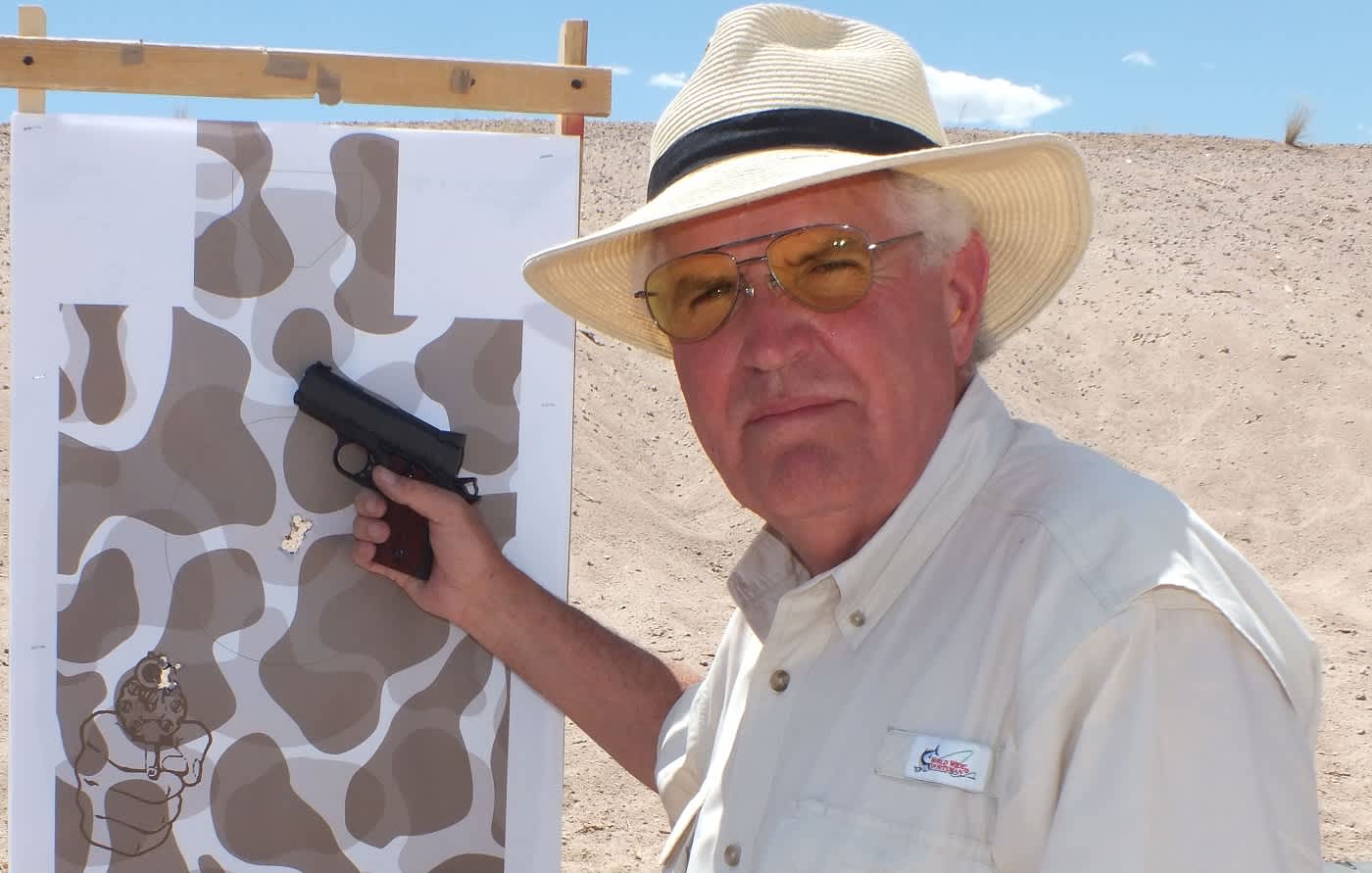Controlling the Trigger: Paramount for Pistol Accuracy
Lewis Creek Shooting School 06.07.13

This week, I was at Gunsite, just outside Chino, Arizona. Gunsite is one of the most prestigious firearms training sites in the world. Founded by the renowned Colonel Jeff Cooper, Gunsite trains Navy SEALs, DEA agents, special forces, and countless other organizations in the tactical use of pistols, rifles, and shotguns. My instructors, Mike Hughes and Chris Weare, were working on our ability to properly manage the trigger. They had the shooters draw the pistol and fire a shot at one target, hold the trigger down, and move to another target before releasing the trigger to fire the next shot. The accuracy improvement among the 10 shooters was amazing.
The times are changing, and more and more new shooters are joining the ranks of firearms owners. Some buy a gun just to own one, some get more serious and get a concealed carry license, and some become regular shooters who compete or, at least, shoot recreationally. As a firearms instructor, I’m amazed at the numbers of new shooters getting into the sport. The National Rifle Association is growing, gun club ranks are swelling, and many competitive events and matches are experiencing more competitors than ever.
All this is great both for the sport and for the future of firearms ownership, but many new shooters and quite a few older ones are frustrated by their difficulty in learning how to accurately shoot a pistol. There are a few aspects of shooting a pistol that are critical to getting a good shot. Grip is certainly important, both in shooting accurately and quickly. Sight picture is obviously important, but the biggest impediment for most shooters is trigger management.
An accurate shot requires that the trigger be activated without moving the gun off target. On first thought, this seems easy. It would appear that all the shooter has to do is to make the gun go off with the trigger finger while not disturbing the aim with hand movement. This is a part of the equation in extreme accuracy shots, but close distance shooting doesn’t require this much precision. Many pistol shooters have trouble keeping their shots in a four-inch circle at just five yards. How could this happen?
The problem comes from the shooter trying to manage the recoil before the shot goes off, meaning the gun moves drastically. Even worse is the tendency to violently push the gun away in fear of the shot, an involuntary habit called “flinch.” Flinch makes firing a good shot almost impossible because, no matter how well you hold the gun up to the time of the flinch, it will be moved off target before the shot is fired and you won’t see the movement. Once this involuntary habit is firmly entrenched, it’s difficult to shake.
Shooting a rimfire pistol helps, because the mind fears the quieter report and light recoil less, but ultimately, the shooter must learn to control the trigger to get over flinch. There are several methods of doing this but the shooter needs to understand that he has a problem before he can correct it. The tried-and-true method is to fire mixed real and dummy ammunition. If you fully expect the gun to fire, and it doesn’t, you can see the severity of your recoil anticipation. With a dummy round in the chamber, the shooter lines up the sights and breaks the trigger and sees the muzzle dip. The shooter can then see why the shots have been going low and left or right.
The natural tendency is to pull the trigger until the gun fires and instantly release. A better method is to pull the trigger through the cycle and pin it to the rear for a short time. In learning this method, it’s good to hold the trigger down through the recoil process until the gun settles down again. . Focusing on pinning the trigger keeps your mind off the recoil and often pays the added benefit of reducing flinch. With most guns, there is an audible and tactile click when the trigger resets. If you don’t feel and hear that reset, you didn’t pin the trigger.
The best analogy is this is to think of popping a balloon on the floor by stepping on it while holding a full cup of coffee. If you stomp the balloon, you’ll spill the coffee. If you lift your foot, place it on the balloon and slowly lower your foot to the floor, the balloon will pop and you won’t spill coffee.
All this is easy to understand and it’s easy to do one time in a unhurried fashion, but it becomes a little harder when you’re under pressure. In order to consistently manage the trigger properly, you must unlearn your old habit so thoroughly that you can manage the trigger properly even when you’re not thinking about the trigger. Once you learn to proper trigger management when shooting slowly, you can speed up the process. The best shooters who are blindingly fast will tell you they pull the trigger all the way back even though they’re shooting almost as fast as the gun will cycle.
When the buzzer sounds at a match, or an assailant comes across the room for you, the skills you’ve cultivated in the quiet of your living room dry firing or on the range by yourself tend to go out the window. Managing the trigger has to become second nature, done without conscious thought, and this requires repetition if you have spent years mismanaging the trigger.
Doing anything well always requires effort. Time spent learning to properly manage the trigger of a handgun is as rewarding as anything you can do to improve your accuracy.

